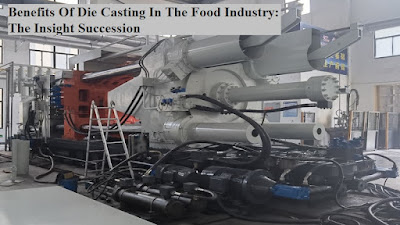Benefits Of Die Casting In The Food Industry: The Insight Succession
The food business is a dynamic and complicated sector that needs continuous innovation to meet changing customer expectations and new trends. The manufacturing process is one of the most important parts of the food business. Due to its numerous advantages, die casting is a production technique that is becoming more and more popular in the food business.
Investment castings for food industry produced by any firm are designed and
manufactured in compliance with the requirements of the customer. In order to
produce these castings, they make use of raw materials of the highest possible
quality, bearing in mind the quality requirements that are prevalent in the
global market.
Excellent Material Qualities For Use In The Food Processing Industry
The improved material qualities that die
casting provides for the preparation of food are one of the most significant
advantages that comes with using die casting in the food sector. High-pressure
injection is used in the process of die casting, which results in the creation
of intricate forms with accuracy and consistency. This process ultimately
results in products that are long-lasting, dependable, and of superior quality.
When it comes to the components and equipment
used in the food processing industry, such as molds, dies, and machinery parts,
the better material qualities of die-cast goods play a significant role. In the
harsh environment of food processing, die casting is a good method for
producing components that have exceptional dimensional precision, clean surface
finishes, and high strength-to-weight ratios. These characteristics make die
casting a perfect choice for usage in the food processing industry.
How Die Cast Works In Food Industry?
1. Complex Forms and Patterns of Design
The manufacture of components with elaborate patterns and complicated forms is made possible via the use of die casting. For the purpose of producing specific components that are used in food processing equipment or packaging gear, this might be a beneficial approach.
2. Economically viable when used with gas
When compared to other sources of fuel, such as coal or oil, gas, and more specifically LPG and natural gas, is a more cost-effective source of fuel. When it comes to fuel sources, the cost-effectiveness of gas may be of great assistance to die casting enterprises in improving their bottom line.
3. Superb effectiveness
It is an energy source that is very efficient
for die casting, which is used in the food sector. Rapidly generating high
temperatures and sustaining them for extended periods of time are also
capabilities that it has. This is very important for the die casting process,
which requires accurate temperature control in order to manufacture components
of superior quality.
4. Low-volume production
Due to the fact that it is in the economic
interests of die casting businesses to engage with clients that place bulk
orders, it is more difficult to get low-volume production runs. Customers who
prefer to submit smaller die casting orders may, however, take advantage of a
one-of-a-kind die casting solution that is now offered by a number of
companies.
5. Protecting Food
It is possible to cast dies using materials
that are safe for consumption and that are in accordance with the applicable
requirements. In order to guarantee that components that come into touch with
food are safe, this is an extremely important aspect of the food business.
6. Economies of scale at work
Die casting businesses often reap the benefits
of economies of scale, which are characterized by a reduction in the cost of
each individual item as the production volume grows. Because of this, it is
advisable to give the greatest rate for purchases that are modest in
volume. It is possible for it to create
material waste during the process of setting up and producing the product,
which may not be very efficient for low-volume runs.
Conclusion
It has been shown that die casting is a vital
manufacturing process. It provides a variety of advantages, such as improved
surface polish, high production efficiency, exceptional dimensional precision,
the capacity to build complicated geometries, and the adaptability of
materials. Its significance in contemporary manufacturing is shown by the fact
that it has a broad variety of applications in the food industry. For the
purpose of satisfying the requirements of detailed designs, lightweight
constructions, and environmentally responsible manufacturing procedures, die
casting continues to develop with the progression of technology.




Comments
Post a Comment